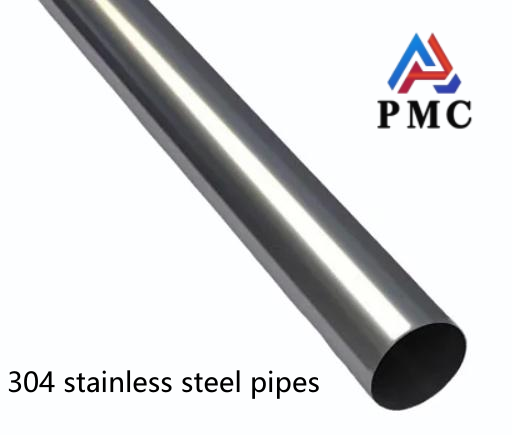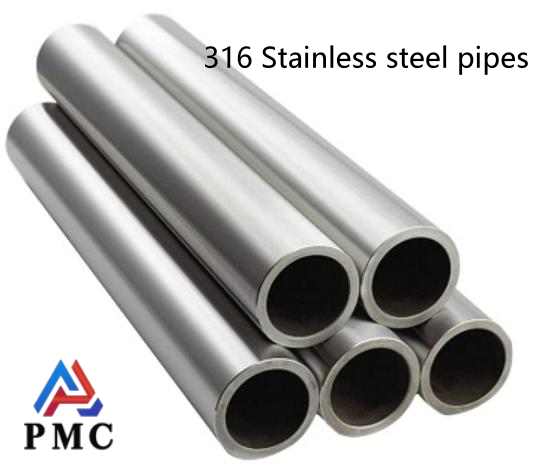
Should I Choose 304 Or 316 Stainless Steel for Bathroom?
The material selection of stainless steel pipes for bathroom products mainly involves two austenitic stainless steels: 304 and 316. The following will explain in detail the characteristics of these two stainless steels, and analyze which material should be selected in combination with the special requirements of the bathroom industry.
304 Stainless Steel Features
1. 304 stainless steel (UNS S30400) is a common austenitic stainless steel. Its main chemical composition includes about 18% chromium (Cr), 8-10% nickel (Ni), and trace amounts of manganese (Mn), silicon (Si), carbon (C) and other elements. 304 stainless steel has the following significant characteristics:
2. Corrosion resistance: Due to the high chromium content, 304 stainless steel has good corrosion resistance to the atmosphere, fresh water, and dilute acid and alkali solutions, and can maintain long-term stability under many conventional environmental conditions.
3. Mechanical properties: It has excellent tensile strength, yield strength, good cold forming and welding properties, and can be easily processed into pipes and fittings of various shapes and specifications.
4. Cost effectiveness: Compared with other high-grade stainless steels, 304 has a relatively low cost and a high cost-effectiveness, so it is widely used in various industrial and civil fields, including kitchen and bathroom equipment manufacturing.

316 Stainless Steel Features
1. 316 stainless steel (UNS S31600, also known as "medical grade stainless steel" or "marine grade stainless steel") adds molybdenum (Mo) elements to 304, generally containing 16-18% chromium, 10-14% nickel and 2-3% molybdenum. Its characteristics include:
2. Enhanced corrosion resistance: The addition of molybdenum greatly improves the stainless steel's resistance to pitting and crevice corrosion in chloride ion media, making 316 stainless steel perform well in seawater, chemicals and other highly corrosive environments.
3. High temperature stability: Compared with 304 stainless steel, 316 can maintain better heat resistance and oxidation resistance in high temperature environment.
4. Medical and food grade applications: Due to its excellent corrosion resistance, 316 stainless steel is widely used in medical devices, food contact equipment and other fields. It is also suitable for bathroom facilities under high-standard sanitary conditions.

Requirements for stainless steel in the bathroom industry
The bathroom environment is usually humid and may have slight chemical corrosion, such as scale, detergent residue, disinfectant, etc. In addition, for the high-end market, aesthetics and durability are also important factors. Therefore, stainless steel pipes for bathrooms need to meet the following standards:
1. Corrosion resistance: must be able to resist oxidation corrosion and rust caused by long-term contact with water.
2. Hygiene and safety: the material must meet the safety standards for drinking water contact materials and no harmful substances should be precipitated.
3. Surface quality: the surface treatment needs to be fine to reduce the possibility of microbial growth and improve cleanliness.
4. Cost effectiveness: both the initial investment cost and the long-term maintenance cost should be considered.
Choose 304 or 316 stainless steel?
In response to the above needs, 304 stainless steel, with its good corrosion resistance and economical price advantage, is sufficient to meet the needs of most regular household and commercial bathroom occasions. Especially in the case of fast drying and good water quality, 304 stainless steel product pipes are fully competent.
However, for specific high-demand environments such as marine climates, swimming pools, SPA centers, hospitals, etc., or when a higher level of corrosion protection is required in the design, 316 stainless steel has more advantages. Its higher corrosion resistance can ensure that the product can maintain good service life and functional effects in complex chemical environments and long-term humid environments.
To sum up, the specific choice of 304 or 316 stainless steel pipes should be based on comprehensive considerations such as the actual use environment of the bathroom products, design life expectancy, and budget. Generally speaking, for most ordinary residential and commercial bathroom facilities, 304 stainless steel pipes are a more economical and reasonable choice; For high-end projects or special application scenarios with strong corrosion potential, 316 stainless steel is recommended to ensure better durability and reliability.
Read more: Can 304 and 316 Stainless Steel Pipes be Distinguished from the Surface?


